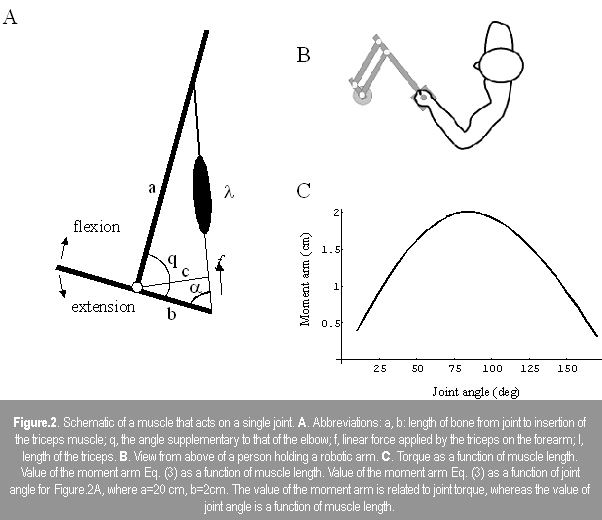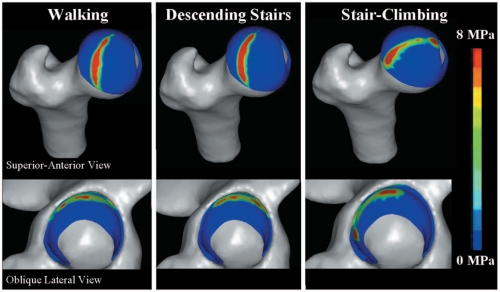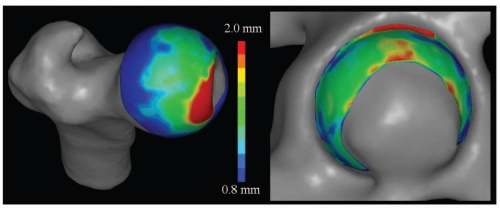Reviewing the Functional Range Conditioning Course
A couple of weeks ago I went to Portland, Oregon to attend the Functional Range Conditioning Movement Specialist certification at the Nike world headquarters. Part of the reason I went was I have a lot of good friends in the fitness industry, as well as a few distance coaching clients, members at my gym, etc who have taken the course and had very good things to say about it. Another reason is that it was at the Nike world headquarters, which is laid out like a university campus but with more athletic venues than lecture halls, and is essentially the Willy Wonka chocolate factory for anyone involved in fitness.
Hey anyone at Nike: I’d happily take any kind of sponsorship, work as a master trainer, carry LeBron’s waterbottle, you know, in case you needed anyone for that kind of stuff.
I’d never been to Portland before, so it was cool to see the city where essentially the craze of hipsters began on the west coast, the east coast epicenter obviously being Brooklyn. The Monday following the workshop, I managed to have half a day to meet up with some people and have coffee, doughnuts (they’re legendary in Portland, apparently), and lunch before flying out. I think I finally managed to not be full yesterday. But that’s a story for another time.
The FRC course is taught by Dr. Andreo Spina, a Canadian chiropractor from the Toronto area, and also assisted this time by Dewey Nielsen, someone whom I have followed and have a ton of respect for over the past few years, and also my good friend Hunter Cook, whom I also have a ton of respect for. To say they all are fairly mobile is a gross understatement, as anyone who follows their Instagram adventures can attest to. They’re probably the most bendy yet controlled guys you could ever meet, which is one of the big selling points to the FRC course as it’s a very eye-catching advertisement for the system when you see the stuff they can do.
My beard had taken on a life of its’ own by this pic.
So let’s go through some of the elements of the course.
Stuff I liked
Whenever I go to a course, i judge it’s merit based on a couple of very simple criteria:
- Does the information make sense to me in it’s application, breadth and depth? Is this something that would only be useful for Cirque du Soliel performers who have the genetics to be as bendy as possible, or could it apply to my 70 year old clients who have had hip and knee replacements?
- Does it work? Is there proof of benefit, not merely being anecdotal but also some formal research to show these methods stand up to scrutiny, and is there a wrong application for it (essentially, what could break the system)?
- How many boxes of training and development does this program tick off when it comes to applying it to my clients? Can I help someone reduce their hesitation to a movement, improve their strength, walk with greater ease, perform at a higher level, or simply do more with the body they have?
Essentially, this course checked all of the above boxes, so I’ll go through them more thoroughly.
#1: The system
Many people will tend to view mobility training as simply spending more time stretching. Anyone who has read any of my work knows that this is rarely the case, except in the example of dancers and gymnasts, who tend to not do any short term stretching to get their mobility in favour of much longer holds.
Without giving away too many details, one of the biggest benefits of the FRC certification is the fact that there’s a tangible outline of how to start with someone, how to progress into other steps, when to step back, and what each one should look and feel like before the person can advance.
Previously, most mobility courses or concepts that I’ve used looked at took too general of an approach: this joint doesn’t move, so do these 10 exercises to help it. They didn’t differentiate between active versus passive assessment, or on control in all points of the movement versus just achieving end ranges, so that was nice to see and definitely something I’ve been using with some of my clients already with good success.
I’ve used many of the concepts individual before, such as CARs or controlled articular rotations. Essentially, doing circles with a joint in as big and as controlled of a range of motion as possible.
I’ve also used many of the concepts of isometric holds, but one of the interesting things about the approach was the inclusion of higher thresholds of tension and effort to develop that isometric approach versus just staying in one place for a lengthened period.
The methods used, as pointed out by Dre many times in the course, weren’t novel in their entirety, but outlined and arranged in a much more logical and progressive manner than I’d seen before.
#2: The Research
Much of the research backing mobility programs tend to look at “when we stretch hamstrings they tend to get more range of motion for a transient period of time,” whereas the FRC course looks much deeper into the histology and cellular biology of force application across a tissue, as well as how the morphology of those tissues alters when directional forces are applied. I love this kind of stuff, as it brings me back to first year exercise physiology classes, something I would humbly suggest many fitness professionals would need to spend more time committing to memory.
One element that definitely stood out was the discussion of joint afferents, or the mechanoreceptors that relayed information to the joint capsule and surrounding ligaments about stress and strain that would relay directives to cause thickening of the connective tissue around the joint to essentially strengthen it. When in a mid-range position, these afferents don’t seem to fire, meaning the remodelling of the joint’s connective tissue itself is reduced compared to using a full range of motion to stretch and stress the connective tissue and cause it to remodel in a favourable way.
This means if you have a workout where all you do is exist in a very tight range of motion, (think distance runners) you’ll develop efficiency in that range of motion, but the joints you’re relying on will not see the same benefits as if you were to stress them in more of the end ranges of motion. Getting them there is half of the battle, training them there is another consideration.
Another good refresher was displaying the connection to joint position and force development. Essentially, mid-ranges tend to produce the highest force, whereas the outside edges tend to have a sharp drop off in force production capability.
Both images referenced from HERE.
What’s not directly apparent, however, is if training into these end ranges of motion alters this curve in any meaningful manner, leads to an increased force production in these ranges, or assists in producing more force in the mid ranges where many people will develop their performance-mediated outcomes. A barbell squat will rarely ever require the hips or knees to move to their very end ranges of internal rotation, but to require controlled internal rotation through the midrange of activity to maintain alignment and force development to move the bar, but I’m not sure if generating force in the end ranges leads to force generation improvement in the mid ranges.
That being said, the main goals of existing and training in the outer edges of the range of motion of a joint help to teach the nervous system to manage those positions, not reflexively tetanize or cramp when there, and to help control the joint when pushed there if ever. For clients who tend to just live and train in the mid ranges, they may predispose themselves to premature wearing of their joint surfaces if they never explore ranges of motion outside of the average.
Doing the same activities within the same range of motions without sufficient recovery time to rebuild tissues will lead to wearing away of those tissues. Not using different and full ranges of motions through a joint may predispose an individual to premature wearing of cartilagenous surfaces.
One element that may not agree with the statement of training through full ranges of motion would be the relative thickness of the contacting cartilage in those end ranges. Where people tend to exist more, there is a thicker cartilage to manage this contact, whereas in the outer ranges there is considerably thinner cartilage.
It is not clear as to whether training in these outer regions would cause wearing that would eventually reduce range of motion sooner than not doing it or not, or lead to favourable remodelling to thicken the cartilage.
#3: More specific red flag than “pain”
One element of movement screens that I don’t like is the use of pain in a global application to mean something that should be referred to a medical professional. Sometimes pain could come from improper execution of a movement, sometimes it could come from psychological stress of the testing scenario, and sometimes it could come from deeper issues.
What I enjoyed about the FRC certification was the description that “in this position, if you feel pain here, then it’s a red flag, but if you feel pain in terms of a cramp or a very uncomfortable stretch, it’s an effect of the joint position.” Much of this came back to closing side versus opening side joint kinematics, and it made sense in my head how it was being described.
Also, the goal of not pushing into pain in a closing side scenario but working around it was definitely something I’ve used a lot with clients, and if the closing side pain lasts for more than 1-2 sessions, it could warrant further investigation by a medical professional to determine if there’s a joint issue, if they need a joint mobilization versus recovery, or avoiding that position to reduce movement-irritated inflammation.
I understand that pain is not something we want to encourage in a training session, but in the application of the referral process it can tend to be over-recommended in some situations. This helps to give trainers and strength coaches just a little more information to know whether a referral is definitely needed versus something that could be necessary in a session or two if it doesn’t resolve, but also helps them to understand some of the potential anatomical reasons that the pain may exist without obviously going too deep down the rabbit hole.
#4: Massive freedom of application
The principles and concepts are more important than the specific applications of the exercises. There are a few that are common and used a lot, but the system allows for a very wide open application to what the coach sees as being fit for their clients, and also what they are looking to accomplish. Applying the principles of specificity makes the job much more fun than just sitting on a leg extension machine, but also allows for on the fly tailoring to what the client is going through that day.
There is no exercise meant for the hamstrings alone, nor any muscle meant exclusively for shoulder external rotation. Essentially, looking through this system you realize very quickly that in terms of movement, there is no spoon.
Assuming that a certain exercise is good for a certain muscle or tissue overlies the fact that there is a defined global interdependence on the entire body to create movement, and that one tissue is no more important to the movement of the body than any others in any specific position. You may feel a muscle working hard, but it goes deeper than that. As mentioned earlier, there’s a cellular response to force application to the tissues, whether internal or external, so even though your TFL may be cramping like crazy during that internal rotation abduction movement, you’re using the entire system to produce it. That TFL cramp is just the lynch pin holding the system together at it’s current weakest point.
Not every course is going to be chock full of sunshine and rosebuds. There’s always going to be some stuff I disagree with or see limited value to.
Stuff I didn’t like
#1: Relation to evolutionary speculation
As seems to be a consistent trend in the fitness or health industry, there was an emphasis on what our ancestors had to do and why we’re not doing that anymore, and how that’s lead to problems. While the narrative is good, it seems odd to use very highly referenced work in terms of cellular biology, and then lead into speculative aspects that are very much unproven and in some cases just incorrect to reinforce them.
For instance, let’s say we no longer have to be hunters or gatherers to find our food. We likely have evolved from the movement patterns required to do those activities because we never use them, which means our tissues have adapted to our new reality. Is this a bad thing? Likely not, because the body is great at moving around. If it was terrible, everyone who lived in New York or London or other places that are highly modernized and don’t involve a lot of hunting and gathering would wind up with a lot of joint problems, and individuals who lived on farms or in rural communities would be devoid of them. This is of course a very over simplistic application, but it shows a connection.
Additionally, saying we share the same traits as cavemen would mean evolution would have completely halted for the past 20-50,000 years. It would also mean that there would be zero evidence that prehistoric man had perfect joint actions and integrities, no orthopaedic issues, and rarely ever was injured.
We know this to not be true. I could go into detail, but instead I’ll refer you to the book Paleo Fantasy by Marlene Zuk, an evolutionary biologist, who could explain it much more effectively than I could.
This concept will likely fly against the concepts put forth by programs that focus on moving, eating and living like our ancestors, but then it should hopefully spur some good conversation and come to a more salient end point versus just assuming how ancient civilizations lived and moved and saying we need to do that too.
I’m not saying training in this manner is wrong, and in many ways it’s entirely beneficial and healthy, but to assume on faulty premises should be avoided. If you want to say “Move like this because you can,” that’s fine, but it’s tough to build a brand around that.
Interestingly, in reading stories about astronauts at the International Space Station, many of them would begin to use their feet as modified hands to do tasks in the absence of gravity, meaning we could adapt to very short term changes in our environment, meaning adaptations like agriculture, cities, and shoes are not that big of a stretch to make.
#2: No component to look at velocity
While the concepts of FRC are fantastic to use in developing and expanding an available range of motion, there wasn’t anything that I could determine to apply to increasing velocities. This was for both eccentric velocities and concentric velocities of movements entering into those end ranges of motion.
For example, if a person were to do some of the PAILs and PALs plus eccentric actions to help the ankle during eversion so that it would theoretically resist spraining as is the commonality in basketball, would these benefit the area similarly if the velocity of the movement was sped up to a game setting?
https://www.youtube.com/watch?v=PI5veHFijAk
Assuming specificity, my guess would be that it would help somewhat, but not much as the amount of loading in this position plus the velocity means the force application is considerably more than what anyone would apply during a training session. This eccentric velocity is still one of the main contact-related forms of injury in many sports, and may not be something that can be addressed with this work, but could still be assisted to some degree.
As joint motion speeds up, so to does force application and power output of the muscles in question, which means the total range of motion may be limited. If a person is involved in a higher velocity activity and starts moving into these ranges of motion, does the newfound range affect their force buffering capabilities, assuming the earlier charts showing a decreased force production during end range activities still holds true with acceleration components, or would entering into these new ranges predispose some type of tissue damage due to this reduced force development? Perhaps there are other courses that address this concept.
#3: No component looking at strength development
The major tenet of “force is the language of cells” only addresses specific strength of the tissues when looking into Progressive and Regressive Angular Loading with external resistance. As mentioned earlier, force production is minimal at end ranges compared to mid ranges, so I would assume a force development model that produced more force would apply greater changes to the tissues than reduced force production capabilities. This does not mean there is no value to producing force to the end ranges, but that there is also considerable value to production in mid-ranges, and likely in mid ranges moving to end ranges.
One such manner is in hypertrophic changes. Bodybuilders have been using the concept “squeeze at the top” of a contraction for decades to spur muscle development, and do so while using external loading. The benefits of loading from mid range to end range versus loading in end range only may need to be explored or expanded, especially when many strength coaches will use external loading parameters with their clients in the weight room.
Band resistance may counteract this concept, as resistance increases with stretch, so moving into end ranges may become harder when using bands, but would be easier with static weights of some type. If there was a way to have max loading in the beginning of the movement, but then reduce loading as the range of motion progresses, that would be awesome. If anyone makes fitness equipment and wants to partner in on that, call me.
#4: Focus on the positive outliers versus the negative outliers
The course was taught by 3 incredibly bendy and competent instructors, which is great. However, 90% of my clients would never be able to get to their level. It would have been very good to see some more regressed models to use with elderly, or in special situations, but that’s just me wanting it to be all about me, like everyone.
Wrap up
As with any course, it’s about what you get out of it and what you can use. I was happy to attend and walk away with some new outlines of application of the concepts, plus some exercises that my clients could use immediately and an unlimited supply of progressions and regressions.
The information presented wasn’t groundbreaking in any way, and much of it was a good review, which I was glad to have. The faults of the program are similar to faults of many programs, and ones that are more petty in nature than deal breakers. The course satisfied my main objectives with any course I attend as I outlined above, and I would be happy to recommend any trainer, coach, therapist, or medical professional attend to expand their repertoire to meet the needs of their clients or patients.
Also, if you can make Dre smile in a picture, you’re almost to my level.
If you’re interested in attending the FRC course or other courses under the Functional Anatomy umbrella, click the link below for info on upcoming dates and locations.








5 Responses to Reviewing the Functional Range Conditioning Course